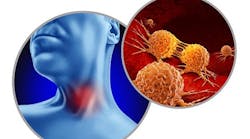Coronal polishing has been a pillar of the typical hygiene visit for over 100 years. In fact, we see evidence that ancient civilizations were using abrasive materials to polish their teeth thousands of years ago! Although this is an age-old practice in preventive oral health care, many new advancements have been made to improve both the patient and provider experience in recent years. During RDH Solutions Lab, we discussed the most common polishing mistakes made by clinicians as well as effective, applicable solutions available through Pac-Dent’s preventive line of products.
Mistake 1: Not disclosing every patient before polishing
The fact of the matter is that the human eye has limits, even when wearing magnification loupes. Plaque bacteria are microscopic in size and not typically detectable until they form a thick layer of biofilm in the patient’s mouth. Disclosing solution gives providers a visual advantage when it comes to biofilm detection and assists in strategic plaque removal. Identifying the presence, location, and amount of biofilm encourages patient ownership and engagement as they are given visual proof of their efforts and shown ways to improve.1
More by this author:
- 6 tips to better manage your clinical schedule
- Dental missions: Are you ready to answer the call?
- The Autoscaler Ultrasonic System from Pac-Dent
Mistake 2: Polishing every patient, every time
Research performed by Cochrane Review in 2018 communicated that little to no difference was found concerning the frequency of planned coronal polishing and the occurrence of early gum disease.2 Considering the fact that microlayers of enamel are removed during the polishing process, clinicians need to base their decision to perform this procedure on factors such as plaque and stain levels, appointment frequency, clinical attachment loss, enamel health, and the presence of dentinal hypersensitivity.
Mistake 3: Using coarse prophy paste on everyone
We might think that coarser polishing products are more effective in cleaning our patients’ teeth, but research states otherwise. A study in 2015 provided evidence to support the claim that continually using coarse prophy paste makes teeth dirtier and unhealthier due to the roughening of enamel from larger abrasive particles found in coarse prophy paste.3 Our goal when polishing is to use the most minimally abrasive product possible to preserve enamel and prevent microscratches on the tooth surface.
Ergonomic and biohazardous risks
Musculoskeletal disorders affect 54% to 93% of dental professionals and are primarily caused by maintaining strained posture and performing prolonged repetitive movements.4 Factors including cord weight and drag, hand pressure, handpiece vibrations, and repeated twisting and turning during coronal polishing contribute to operator fatigue and injury. Additionally, spatter containing prophy paste, saliva, blood, water, and viable microorganisms presents a major biohazard to clinicians during polishing procedures. These risks must be considered when selecting the products and tools we use on our patients.
Recommendations
Pac-Dent’s line of prophy angles provides answers to the issues clinicians face concerning performance and infection control. The AntiSplatr and Oscillating AntiSplatr Mini are effective in reducing spatter by up to 100% and have strategically designed cups to grab onto fluids, retain paste, and adapt to the unique contours of the individual’s teeth. The angles pair wonderfully with ProPaste One—a single-use prophy ring and AntiSplatr paste combo that eliminates the operator’s need to twist, turn, or use a pinch grasp to access their prophy paste. The ProMate CL hygiene handpiece is the final piece of the pro polishing trio, with a cordless design that significantly reduces weight, eliminates drag, and increases mobility when compared to corded handpieces. It’s remarkably quiet and has multispeed settings that can be adjusted on the handpiece or the Bluetooth-powered foot pedal.
Last, no hygiene setup is complete without Gingicaine—a 20% benzocaine preloaded anesthetic applicator that allows the clinician to apply a viscous gel along the gingival margin or in pockets as deep as 7 mm. Within 15 to 20 seconds of application, patients can expect up to 30 minutes of anesthetic relief, which means less stress and discomfort for the provider as well.
Pac-Dent has prevention specialists covered with the best tools and techniques for next-level coronal polishing. With products designed to reduce biohazard exposure and ergonomic strain, clinicians can confidently remove oral plaque and stain without worrying about their safety. With disposable items available in a variety of shapes, sizes, grit, and flavors, the polishing experience really can be catered to the individual patient’s needs. Pac-Dent makes it possible to truly polish like a pro!
Editor's note: This article appeared in the August 2023 print edition of RDH magazine. Dental hygienists in North America are eligible for a complimentary print subscription. Sign up here.
References
Strange M. Not using disclosing solution on every patient? Here’s why you should be. RDH. October 3, 2022. https://www.rdhmag.com/patient-care/article/14279190/not-using-disclosing-solution-on-every-patient-heres-why-you-should-be
Lamont T, Worthington HV, Clarkson JE, Beirne PV. Routine scale and polish for periodontal health in adults. Cochrane Database Syst Rev. 2018;12(12):CD004625. doi:10.1002/14651858.CD004625.pub5
Sawai MA, Bhardwaj A, Jafri Z, Sultan N, Daing A. Tooth polishing: the current status. J Indian Soc Periodontol. 2015;19(4):375-380. doi:10.4103/0972-124X.154170
De Sio S, Traversini V, Rinaldo F, et al. Ergonomic risk and preventive measures of musculoskeletal disorders in the dentistry environment: an umbrella review. PeerJ. 2018;6:e4154. doi:10.7717/peerj.4154






